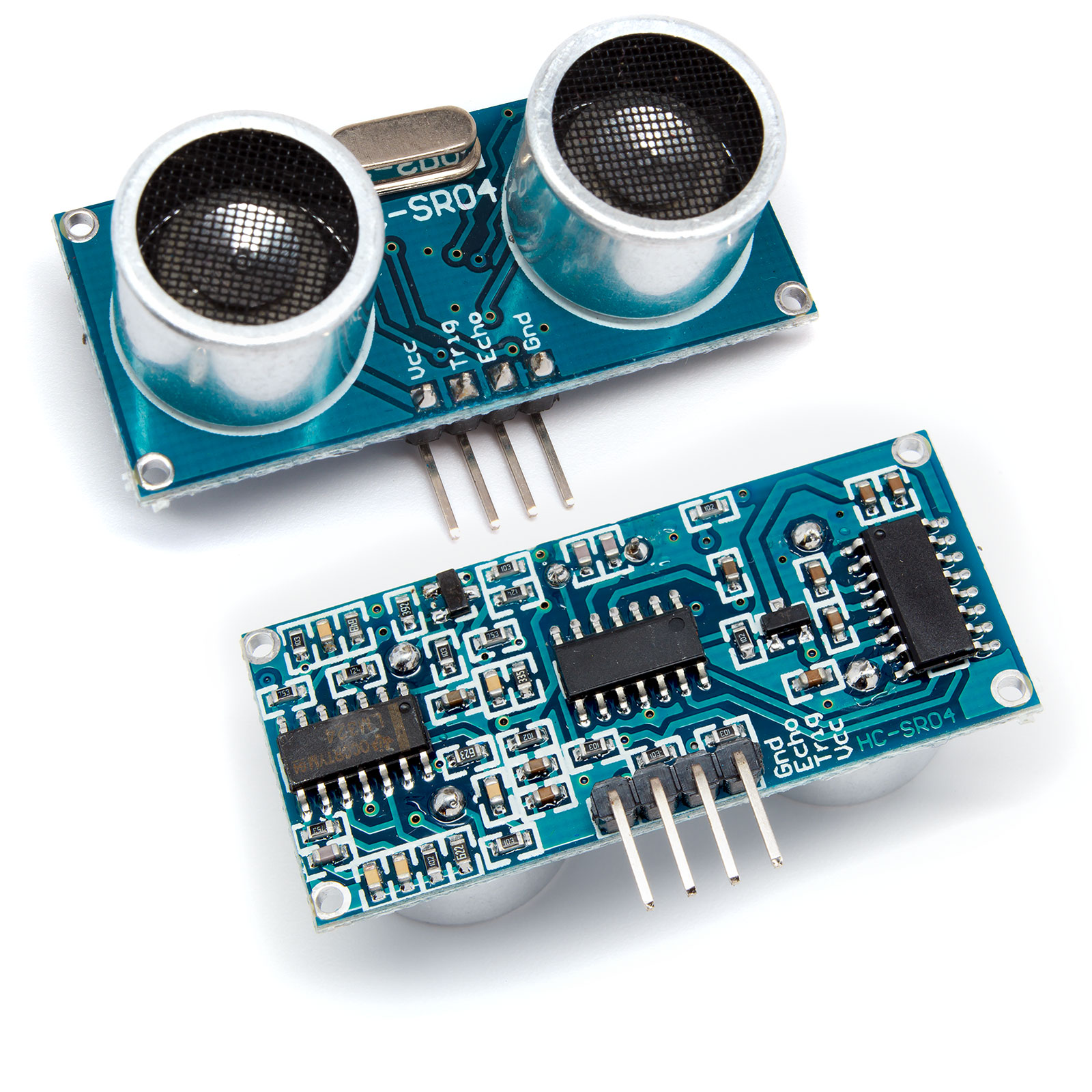- Using IO trigger for at least 10us high level signal
- The Module automatically sends eight 40 kHz pulses and detects if there is a pulse echoed back. The timing between the transmit pulse and the receive pulse is used to calculate distance.
- Static current: less than 2mA
- The module performance is stable, measure distance accurately.
- Arduino compatible
There are 4 pins on the module: VCC , Trig, Echo, and GND . To use the sensor: pull the Trig pin to high level for more than 10us to trigger an impulse. The module will begin sending ultrasonic pulses. If an object is detected in front of the sensor the Echo pin will rise to a logic high level. The distance between the sensor and the object can then be calculated using the equation below.
Distance = ((Duration)*(Sonic :340m/s))/2
/* HC-SR04 Sensor
https://www.dealextreme.com/p/hc-sr04-ultrasonic-sensor-distance-measuring-module-133696
This sketch reads a HC-SR04 ultrasonic rangefinder and returns the
distance to the closest object in range. To do this, it sends a pulse
to the sensor to initiate a reading, then listens for a pulse
to return. The length of the returning pulse is proportional to
the distance of the object from the sensor.
The circuit:
* VCC connection of the sensor attached to +5V
* GND connection of the sensor attached to ground
* TRIG connection of the sensor attached to digital pin 2
* ECHO connection of the sensor attached to digital pin 4
Original code for Ping))) example was created by David A. Mellis
Adapted for HC-SR04 by Tautvidas Sipavicius
This example code is in the public domain.
*/
long microsecondsToInches(long microseconds);
long microsecondsToCentimeters(long microseconds);
const int trigPin = 2;
const int echoPin = 4;
void setup() {
// initialize serial communication:
Serial.begin(9600);
}
void loop()
{
// establish variables for duration of the ping,
// and the distance result in inches and centimeters:
long duration, inches, cm;
// The sensor is triggered by a HIGH pulse of 10 or more microseconds.
// Give a short LOW pulse beforehand to ensure a clean HIGH pulse:
pinMode(trigPin, OUTPUT);
digitalWrite(trigPin, LOW);
delayMicroseconds(2);
digitalWrite(trigPin, HIGH);
delayMicroseconds(10);
digitalWrite(trigPin, LOW);
// Read the signal from the sensor: a HIGH pulse whose
// duration is the time (in microseconds) from the sending
// of the ping to the reception of its echo off of an object.
pinMode(echoPin, INPUT);
duration = pulseIn(echoPin, HIGH);
// convert the time into a distance
inches = microsecondsToInches(duration);
cm = microsecondsToCentimeters(duration);
Serial.print(inches);
Serial.print("in, ");
Serial.print(cm);
Serial.print("cm");
Serial.println();
delay(100);
}
long microsecondsToInches(long microseconds)
{
// According to Parallax's datasheet for the PING))), there are
// 73.746 microseconds per inch (i.e. sound travels at 1130 feet per
// second). This gives the distance travelled by the ping, outbound
// and return, so we divide by 2 to get the distance of the obstacle.
// See: http://www.parallax.com/dl/docs/prod/acc/28015-PING-v1.3.pdf
return microseconds / 74 / 2;
}
long microsecondsToCentimeters(long microseconds)
{
// The speed of sound is 340 m/s or 29 microseconds per centimeter.
// The ping travels out and back, so to find the distance of the
// object we take half of the distance travelled.
return microseconds / 29 / 2;
}










